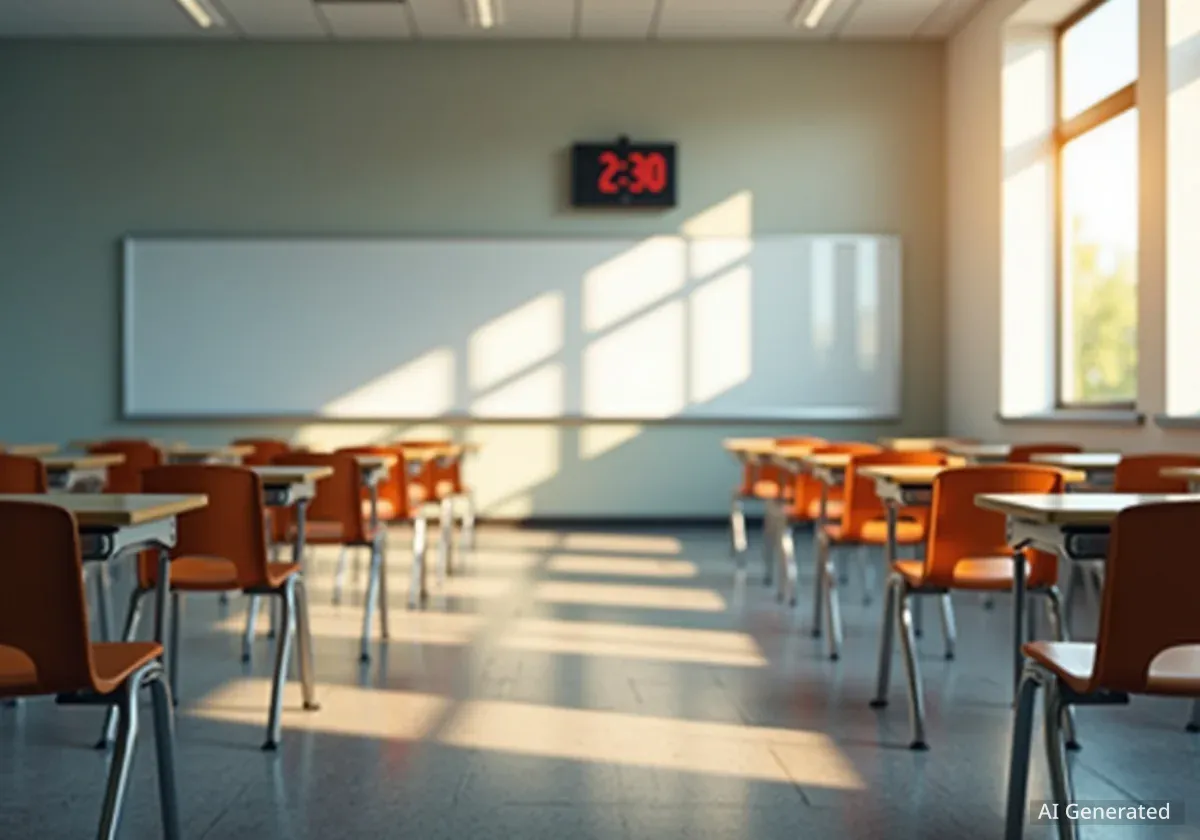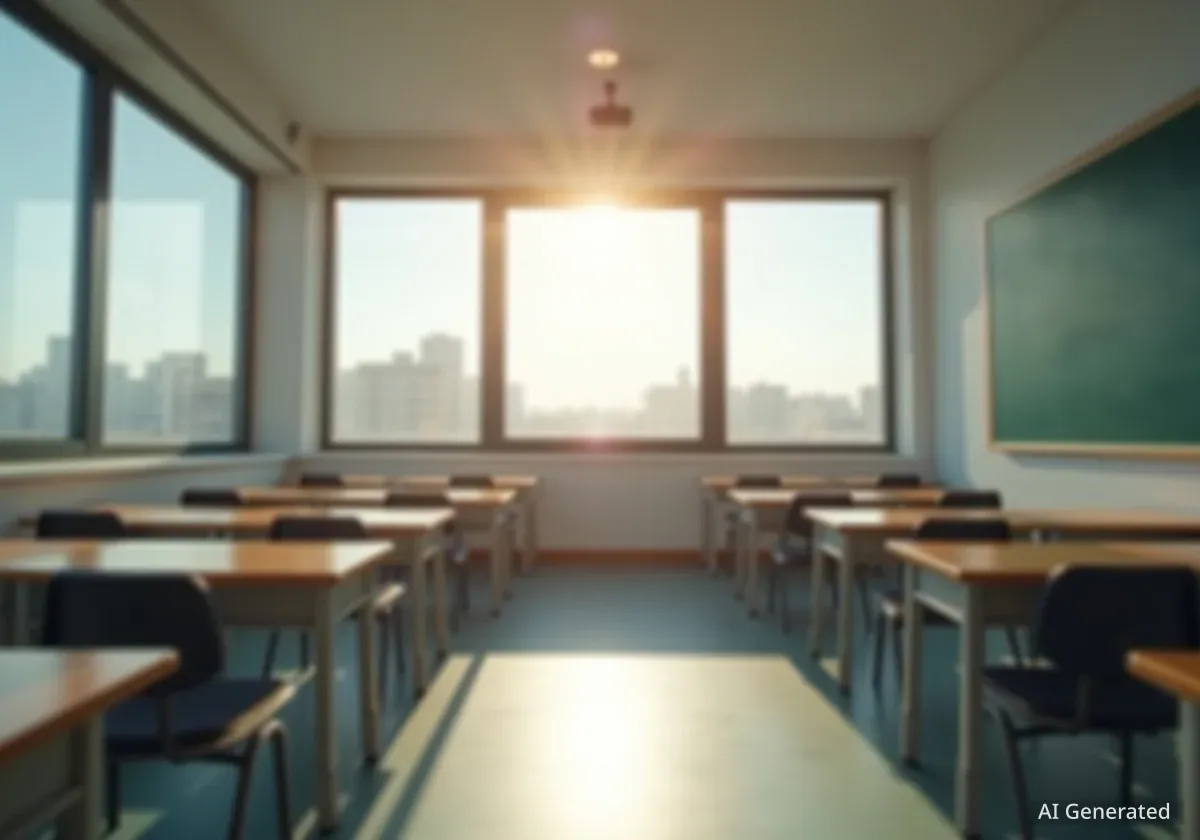The San Diego Unified School District board has approved a significant scheduling change for three of its high schools. Madison, Canyon Hills, and Mira Mesa high schools will transition to a 4x4 block schedule starting in the 2026-27 academic year, a move officials say will increase academic opportunities for students.
The decision, made during a Tuesday board meeting, alters the traditional six-period school day. Under the new system, students will take four longer classes per semester, completing a total of eight courses per year instead of six.
Key Takeaways
- Three San Diego high schools—Madison, Canyon Hills, and Mira Mesa—will adopt a 4x4 block schedule.
- The change is set to begin with the 2026-27 school year.
- Students will take four classes per semester, totaling eight per year, instead of the traditional six year-long classes.
- Proponents state the new schedule allows for more electives, credit recovery, and opportunities for college-level coursework.
District Board Approves Transition
The San Diego Unified board of education finalized the decision to implement the 4x4 block schedule after a period of review. The vote officially sets Madison, Canyon Hills, and Mira Mesa high schools on a path to a new daily structure in just under two years.
This model is designed to provide deeper engagement with subjects by extending class periods. Instead of juggling six different subjects daily throughout the year, students will focus on four at a time, completing a full course in a single semester.
Delayed Decision Process
The board had originally scheduled a vote on the transition for late September. However, the decision was postponed following feedback from some community members who argued the process felt rushed and that more research was needed before making such a significant change.
How the 4x4 Block Schedule Works
The 4x4 block schedule represents a fundamental shift from the conventional high school day. The structure is based on semesters, with students completing a new set of courses each term.
Here is a breakdown of the key differences:
- Traditional Schedule: Students typically take six year-long courses, attending each class for approximately 50-60 minutes every day.
- 4x4 Block Schedule: Students take four semester-long courses, attending each class for a longer period, often around 90 minutes. They then take four different courses in the second semester.
This change effectively increases the number of courses a student can complete in a single school year from six to eight. This opens up two additional academic slots annually, which can be used for a variety of purposes.
Expanded Opportunities for Students
District leadership and educators have highlighted several key benefits they anticipate from the new scheduling model. The primary advantage is the increased flexibility and academic choice it offers students.
More Electives and Advanced Courses
According to San Diego Unified's Superintendent Fabiola Bagula, the extra course slots will allow students to explore more subjects beyond core requirements. This could include more arts, career technical education, or other specialized electives.
"High school doesn't look like high school when I was there," Bagula said. "There's a lot of really beautiful opportunities. I've seen children graduate from high school, not only with a diploma but with even an AA degree."
The ability to take eight courses per year also creates more pathways for students to enroll in college-level classes, such as Advanced Placement (AP) or community college courses, while still in high school.
Support for Graduation and Credit Recovery
Another significant benefit is the expanded opportunity for students to stay on track for graduation. If a student fails a required course in the fall semester, they have the chance to retake it in the spring without falling behind their peers.
This built-in flexibility is seen as a crucial support mechanism, reducing the need for summer school or more intensive credit recovery programs. Students can also use the extra slots to accelerate their studies and potentially graduate early if they choose to.
Student Perspective
Leilani Hernandez, a tenth-grade student, expressed support for the change, noting the limitations of the current system. "In high school, you know, we're cut out to only six per year, but there's so many other classes," she said. "And I realized like, ‘Oh, I should have taken that,’ but because of our schedule, it's so limited. But we get two extra classes.”
Impact in the Classroom
Teachers also anticipate positive changes within the classroom environment. The longer class periods are expected to allow for more in-depth instruction and hands-on activities that are often difficult to fit into a shorter timeframe.
Deeper Learning and Engagement
Robert Lovato, a 10th-grade biology teacher, pointed out the practical advantages for science classes. With a 90-minute block, his students will have more time to conduct experiments and labs without feeling rushed.
Educators also predict that with fewer classes to manage each day, students may experience improved focus and better attendance. The mental load of preparing for six different subjects is reduced to four, which could lead to less stress and deeper engagement with the material.
"I think it's just a great opportunity for our kids," Lovato stated. "Change is good."
The transition to a 4x4 block schedule at these three San Diego high schools will be closely watched as the district continues to explore new models for student success in the 21st century.





